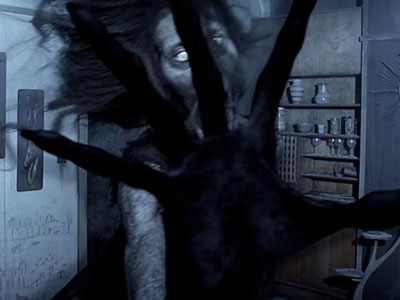Lighting and Colour.
Lighting is an important convention because it is used to put across a certain mood or atmosphere. It helps to guide the audience's attention to a particular object, person, emotion or gesture. The lighting in a film can create more meaning than we think. Colour is a important convention in film because in scenes it has different connotations to them which give a different interpretation to every scene.Angles of Lighting.
Under Lighting:- Under lighting is when the light comes from below the person. This has a distorting effect on the look of the character.
- An example of under lighting is this scene from the walking dead. It is used to portray the things in the scene as distorted and mysterious. This gets a certain response from the audience making them feel uneasy and confused.
- This is when the light comes from above the person, this tends to highlight the features of the character. When they use this lighting it makes the person look more glamorous
- An example of top lighting is from the film women in black. When the character enters the top lighting is used so the audience can see his facial expressions clearly and so that everything in the scene is almost visible. This lighting all makes it look as natural as possible for a house setting.

- The light is from behind the character. It causes silhouettes to be seen and mystery.
- An example of back lighting is in this picture. It causes mystery because it hides identity and facial expressions. This causes the audience to feel anxious about what they are watching.

Types of Lighting.
Low Key:- When using low key lighting is used it is usually dark with small areas of light, this creates shadows within the scene.
- An example of low key lighting is in this picture, it shows the tension within the scene. It creates shadows within the shot which distorts what is happening.

High Key:
- The lighting looks more natural when using high key lighting. When watching the scene it looks more realistic to our eyes.
- The high key lighting in the film obsessed has been used to highlight the actresses facial expression. It is natural but at the same time very dramatic.
What type of Lighting is conventional in Thrillers and Why?
In thriller films the type of lighting that is conventional differs depending on what type of thriller it is. For example in a psychological thriller the types of lighting that would be conventional would be low key lighting because it will cause confusion and suspense. The angles of lighting that are used in thrillers are usually under lighting and back lighting because they create the most mystery. This adds to the story line and plays with the audiences emotions and reactions as well as portraying the characters in a certain way. The lighting used also helps add to the idea that thrillers are quite depressing and dark.
Colour.
Colour in scenes have different connotations to them and can give different interpretation to the scene and the storyline of a film.
Colours such as red and blue are used to create a sense of darkness in scenes. Here are examples:
Red:
Blue:
The Moon and The Gutter.
There is very little lighting and most of the lighting there is, is back light and low key. The way the lighting goes from light to dark will make the audience feel apprehensive to what is going to happen next. There is four main colours; black, blue, white and red. The white provokes the thought of innocence but the black and blue represent darkness and mystery. The colour red shows us that something is about to happen.




